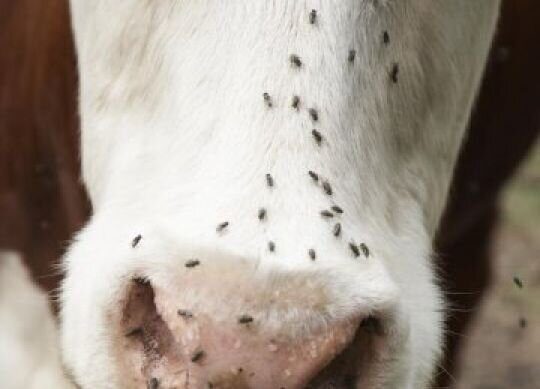Fly Control is Key to Preventing Mastitis
Mastitis is one of the most common diseases affecting dairy operations as a detriment to cow comfort and, ultimately, profitability. Traditionally, dairymen have relied on a five-point plan to control the disease that focuses primarily on sanitation and proper treatment of the herd.
But Dr. Stephen C. Nickerson, head of the Animal and Dairy Science Department at the University of Georgia, thinks there is one area that deserves greater consideration. “One potential mastitis management practice that has been overlooked is fly control,” said Nickerson. “And with the new somatic cell count (SCC) legal limit of 400,000 cells per milliliter looming in the very near future, every attempt to reduce animal stress and the development of new intramammary infections is warranted, especially during the hot summer months when fly populations are at their peak.”
Horn flies are a leading cause of intramammary infections in cows as they bite the animals to feast on their blood. When a heifer’s teats have been bitten, they will develop many scabs containing bacteria that can develop into disease, most commonly mastitis. Supporting his case for fly control, Nickerson cites a survey performed by Louisiana State University. The survey found that dairy herds using fly control produced significantly lower numbers of mastitis infections than similar dairies applying no fly control.
The discrepancy was greatest with the Staphylococcus aureus bacterial species, the most common cause of mastitis, which was found in 55.2 percent of untreated cows but only 5.6 percent of those in treated herds. According to Nickerson, dairies that combine various fly control methods with a proper integrated pest management (IPM) program can see a significant reduction in cases of mastitis. IPM is a pest control strategy that uses an array of complementary methods including natural predators and parasites, cultural practices, biological controls, various physical techniques and insecticides.
Proper sanitation practices, such as cleaning up spilled feed and preventing manure buildup around barns and fences, will eliminate breeding sites for these flies. Adult flies can also migrate from other areas and may require the use of on-animal and premise insecticide applications and/or the use of traps and baits to control them.
Feed-through insect growth regulators have become a highly recommended component of any IPM program to be used in conjunction with insecticides. These feed supplements can prevent house, stable, face and horn flies from developing in and emerging from the manure of treated cattle. Unlike conventional insecticides that attack the nervous system of insects, feed-through regulators can interrupt the fly’s life cycle, rather than through direct toxicity. When mixed into cattle feed, they pass through the digestive system and into the manure. With only very small concentrations, they can disrupt the normal molting process of the fly larvae, disrupting the production of a substance called chitin, a key component of an insect’s exoskeleton that is not found in mammals. Without a properly formed exoskeleton, the immature fly cannot survive to adulthood.
Each fly presents a unique set of problems for a dairy operation, but a proper control effort can significantly lessen the impact. By identifying the pests affecting the dairy and implementing a complete IPM program, dairy operators can help keep cows comfortable, healthy and profitable.
Adapted from Mark Taylor for Progressive Dairy.
Photo courtesy of Mark Taylor.



